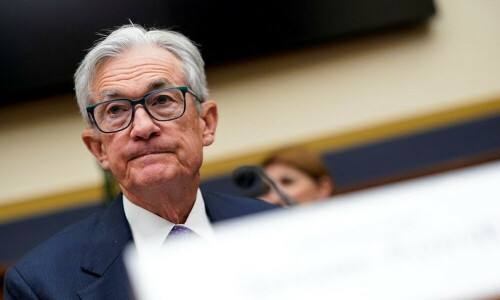Federal Reserve Maintains Interest Rates, Signals Future Adjustments
The Federal Reserve opted to keep interest rates unchanged on Wednesday, a widely anticipated decision. However, central bank officials signaled their continued expectation of reducing borrowing costs by approximately 0.5% before the year concludes. This outlook is shaped by a gradually decelerating economy and a projected moderation in inflation.
Evaluating the impact of the administration’s tariff implementations, Federal Reserve representatives have moderately increased their inflation forecasts for the current year. Their favored metric for gauging price escalations is now anticipated to reach 2.7% by year-end, a slight rise from the 2.5% projection made in December. It is worth noting that the Federal Reserve aims to maintain inflation at a 2% level.
Conversely, economic growth projections for the current year have been revised downward from 2.1% to 1.7%, accompanied by a marginal increase in the anticipated unemployment rate by the close of the year.
According to policymakers, potential hazards have grown, with widespread agreement that the outlook for the year remains uncertain.
Market Uncertainty Amidst Tariff Concerns
The Federal Reserve acknowledged heightened uncertainty in its latest policy statement, which considers the early phases of the new administration and the preliminary introduction of planned tariffs on imported goods. The benchmark interest rate remains within the 4.25%-4.50% band.
Furthermore, the Fed announced a deceleration in the ongoing reduction of its balance sheet, a process referred to as quantitative tightening.
Federal Reserve Governor Chris Waller expressed disagreement with the policy statement due to modifications in the balance sheet strategy.
Revised Projections: Lower Growth, Higher Unemployment
The interest rate forecasts aligned with market expectations leading up to the meeting, reaffirming the Federal Reserve’s overarching view that a gradual easing of inflation will allow for further monetary policy accommodation.
Nevertheless, achieving this objective may prove challenging. While the statement refrained from directly mentioning specific policies or tariffs, the projections for elevated inflation this year coincide with the unveiling of tariff proposals.
For the time being, the Fed appears to be analyzing the price fluctuations linked to these import duties, perceiving them as a one-time occurrence rather than a continuous source of inflationary pressures.
The long-term inflation forecast beyond 2025 remained consistent with the projections made in December, with a projected return to 2% by the conclusion of 2027.
The anticipated rate reductions beyond the current year also remained unchanged, reaching 3.1% by the end of 2027, approximating the level deemed to have a neutral effect on spending and investment.
The Federal Reserve reduced its principal interest rate by a full percentage point the previous year but has maintained steady rates since December, awaiting further confirmation that inflation will continue to decline and for greater clarity regarding the repercussions of current policies.
In contrast to claims of an imminent economic “golden age” resulting from the imposition of tariffs, mass deportation initiatives, and deregulation efforts, the Federal Reserve’s forecasts anticipate growth at 1.7% this year and a mere 1.8% in both 2026 and 2027. The unemployment rate is projected at 4.4% this year and 4.3% in 2026 and 2027. These figures surpass recent lows and exceed the latest reported rate of 4.1% in February.
Federal Reserve Chairman Jerome Powell is scheduled to deliver a press briefing at 2:30 p.m. EDT to elaborate on the latest policy statement and projections.



Comments (0)
No comments yet. Be the first to comment!
Leave a Comment